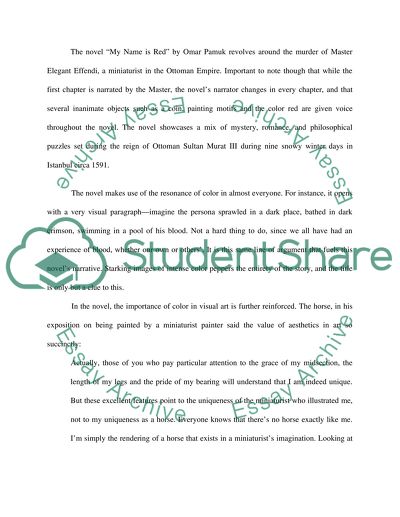Cite this document
(“Colors in the Novel My Name is Red by Orhan Pamuk Essay”, n.d.)
Colors in the Novel My Name is Red by Orhan Pamuk Essay. Retrieved from https://studentshare.org/literature/1501076-colors-in-the-novel-my-name-is-red-by-orhan-pamuk
Colors in the Novel My Name is Red by Orhan Pamuk Essay. Retrieved from https://studentshare.org/literature/1501076-colors-in-the-novel-my-name-is-red-by-orhan-pamuk
(Colors in the Novel My Name Is Red by Orhan Pamuk Essay)
Colors in the Novel My Name Is Red by Orhan Pamuk Essay. https://studentshare.org/literature/1501076-colors-in-the-novel-my-name-is-red-by-orhan-pamuk.
Colors in the Novel My Name Is Red by Orhan Pamuk Essay. https://studentshare.org/literature/1501076-colors-in-the-novel-my-name-is-red-by-orhan-pamuk.
“Colors in the Novel My Name Is Red by Orhan Pamuk Essay”, n.d. https://studentshare.org/literature/1501076-colors-in-the-novel-my-name-is-red-by-orhan-pamuk.


